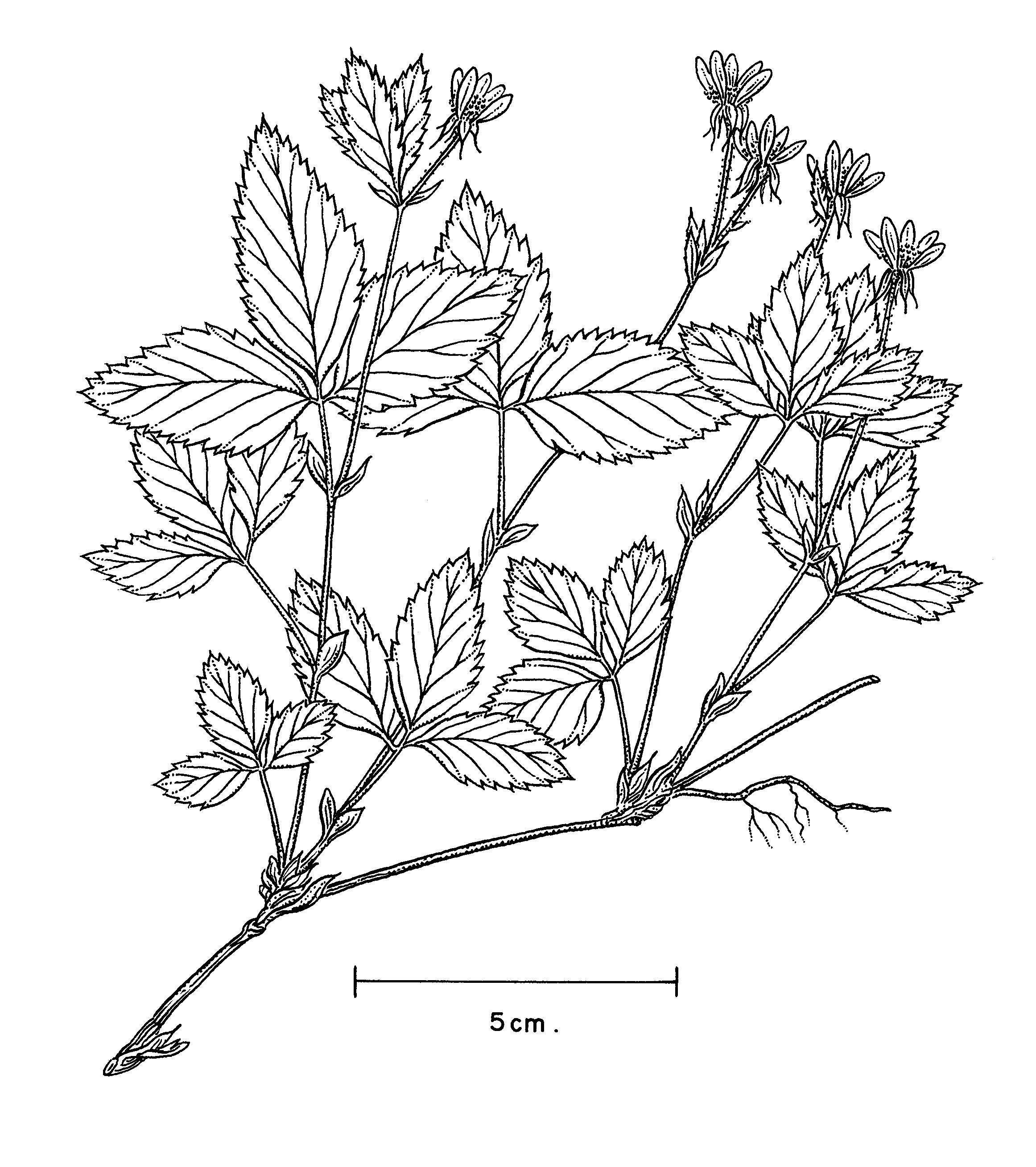Rubus pubescens – trailing raspberry
Common Name
trailing raspberry
Alternate Common Names
- dwarf red raspberry
Family
Rosaceae
Scientific Name
Rubus pubescens
Soil Moisture Regime (SMR)
- Medium (M)
- Wet (W)
Soil Nutrient Regime (SNR)
- Rich (R)
Hitchcock, C. Leo, and Arthur Cronquist. Flora of the Pacific Northwest: An Illustrated Manual © 1973. Reprinted with permission of the University of Washington Press.
General / Habitat
- Moist forests, streambanks and swamps
- Middle to high elevations
Key Identifying Characteristics
- Form: Trailing stems and erect shoots, rooting at the nodes, soft-hairy
- Leaves: Long-stalked, compound with 3 leaflets, coarsely-toothed or even double-toothed except near base, somewhat hairy on both sides
- Flowers: white to pale pink, petals delicate and in 5, borne in 1-3 on erect stalks, numerous stamens
- Fruit: dark red, globe-shaped cluster of drupelets attached to spongy receptacle (blackberry-like)
Lookalikes
- can distinguish non-reproductive Rubus pubescens from other Rubus (especially Rubus ursinus) based on the unarmed-hairy stems and the yellowish-green leaves
External References
Sources
Douglas, G.W. et al (Editors). 1998-2002. Illustrated Flora of British Columbia, Volumes 1 to 8. B.C. Min. Environ., Lands and Parks, and B.C. Min. For., Victoria, B.C.
Pojar, J. and A. MacKinnon. 2014. Plants of Coastal British Columbia Including Washington, Oregon & Alaska. B.C. Ministry of Forestry and Lone Pine Publishing. Vancouver, B.C.


